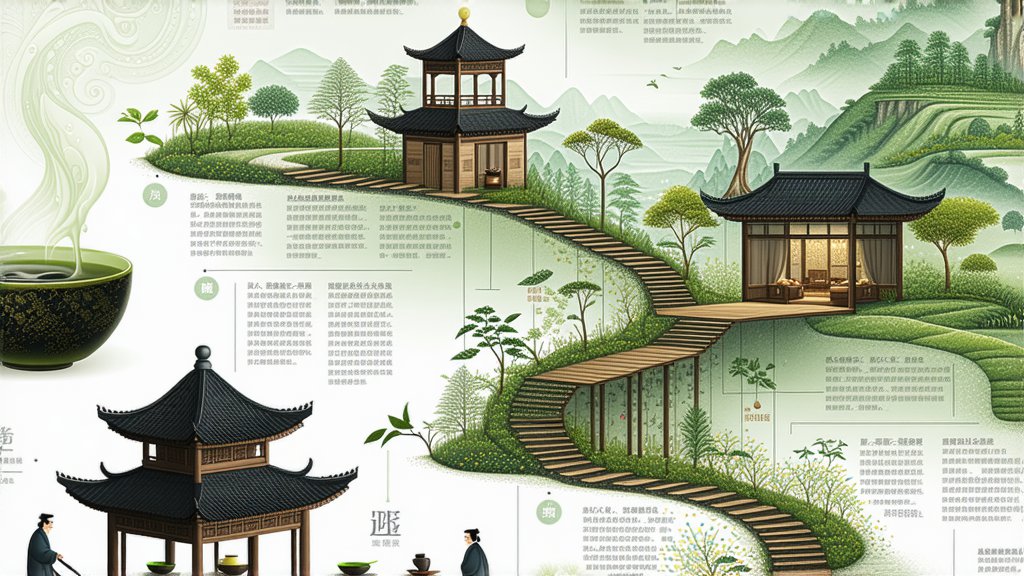
Pu-erh tea, a gem within China's rich tea heritage, stands as a testament to the country's long-standing relationship with tea. Originating in the Yunnan province, this unique variety of black tea has captivated tea enthusiasts worldwide with its deep flavors, complex aromas, and purported health benefits. Unlike other teas that are typically consumed fresh, Pu-erh undergoes a fascinating process of post-fermentation, which not only enhances its taste but also imbues it with a character that matures gracefully over time.
A Glimpse into History
The history of Pu-erh tea dates back over a thousand years, intertwining with the ancient trade routes that connected China to the rest of Asia. It is said that the tea was named after the market town of Pu'er, where it was compressed into cakes for easy transportation along the Silk Road. These "tea bricks" became a vital commodity, prized for their ability to last long journeys without spoiling, making them a staple for traders and nomads alike.
Varieties of Pu-erh Tea
Pu-erh tea comes in two primary forms: raw (Sheng) and ripe (Shou). Sheng Pu-erh is made from sun-dried, unfermented leaves and is known for its bright, astringent flavor profile that mellows with age. Shou Pu-erh, on the other hand, undergoes a pile-fermentation process akin to composting, resulting in a darker, earthier taste that can be enjoyed immediately or further aged for deeper complexity. Both types offer a window into the art of tea-making, reflecting the balance between nature and human ingenuity.
The Art of Craftsmanship
The production of Pu-erh tea is a meticulous process that begins with the careful selection of leaves from ancient tea trees, some of which are centuries old. After plucking, the leaves undergo a series of steps including withering, rolling, and sun-drying (for Sheng) or piling and fermenting (for Shou). Each stage requires precise control over temperature, humidity, and timing to ensure the desired outcome. The final product may be compressed into various shapes such as cakes, bricks, or tuochas (nestles), each adding to the aesthetic appeal and preserving the tea's integrity during storage.
The Ritual of Tasting
To truly appreciate Pu-erh tea, one must engage in the ritual of Gongfu Cha, a traditional Chinese tea ceremony that emphasizes mindfulness and appreciation. Begin by warming the teapot and cups with hot water to open up the pores of the clay and prepare them for brewing. Next, break off a small piece of Pu-erh tea from the cake or brick and place it in the pot. Rinse briefly with boiling water to 'wake up' the leaves before discarding this first infusion. Subsequent steepings should be progressively longer, allowing the flavors to fully express themselves. Sip slowly, savoring the evolving taste profile from bitterness to sweetness, while inhaling the rich, earthy aroma that fills the air.
Health Benefits and Cultural Significance
Beyond its sensory pleasures, Pu-erh tea has been associated with numerous health benefits. Its high content of polyphenols and probiotics from the fermentation process is believed to aid digestion, reduce cholesterol levels, and boost the immune system. In Chinese culture, sharing a pot of Pu-erh tea symbolizes friendship, respect, and the passing of wisdom from generation to generation. It serves as a bridge connecting the past with the present, inviting us to slow down and savor life's simple pleasures.
In conclusion, Pu-erh tea embodies the essence of Chinese tea culture – a harmonious blend of tradition, craftsmanship, and a deep connection to nature. As you embark on your own journey exploring this remarkable beverage, remember that each cup tells a story, weaving together the threads of history, geography, and human experience into a tapestry of endless fascination.